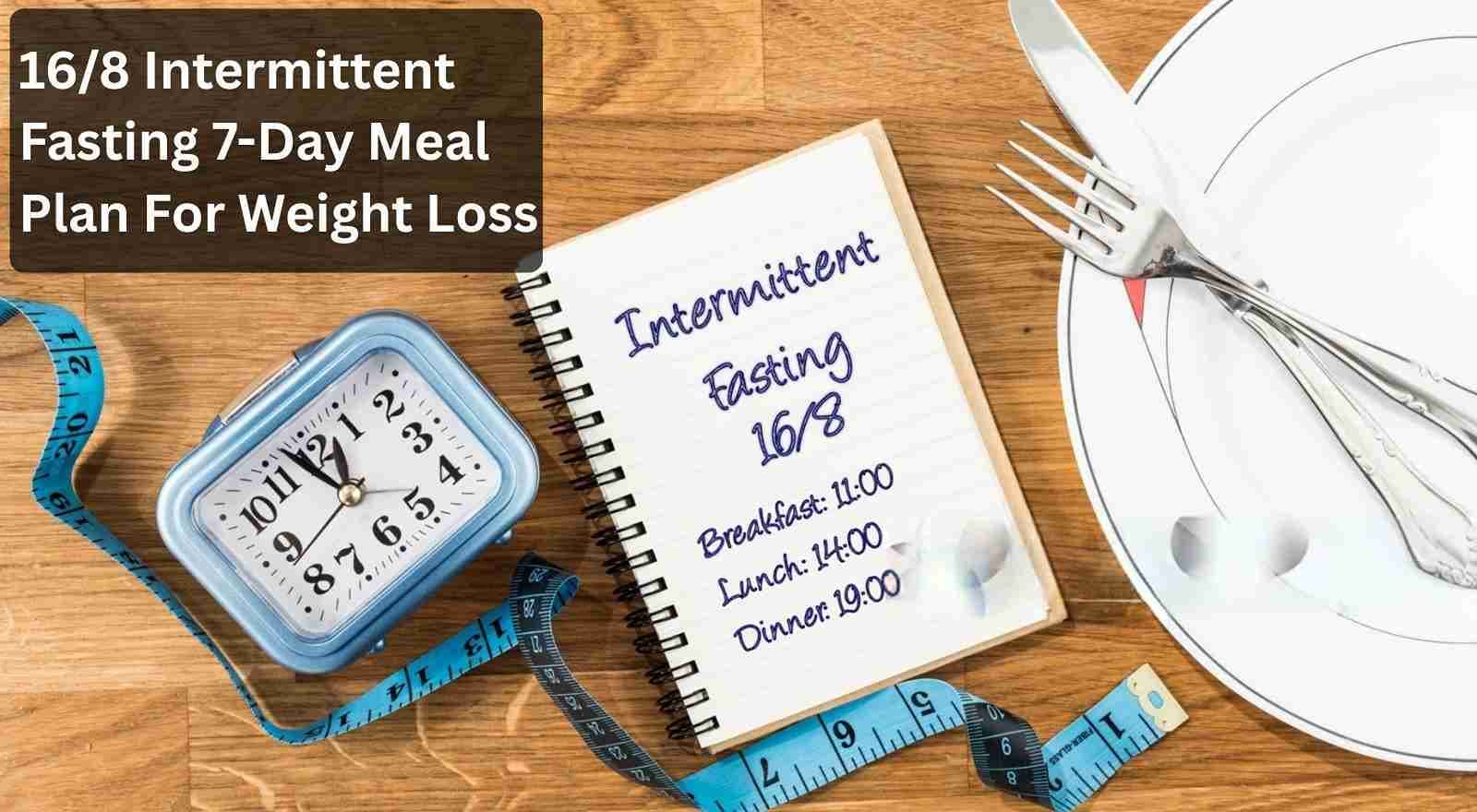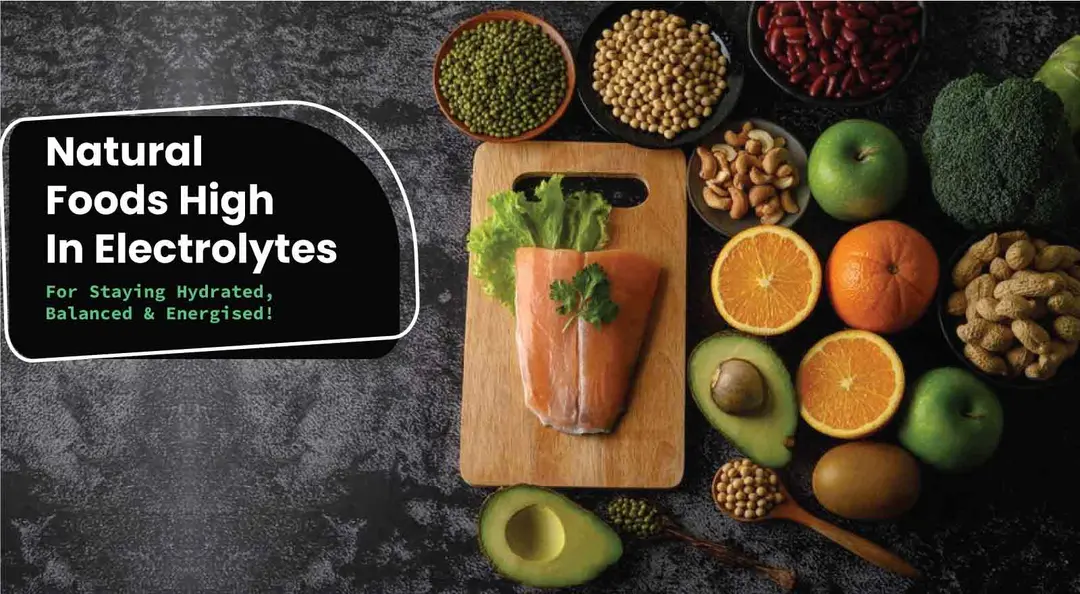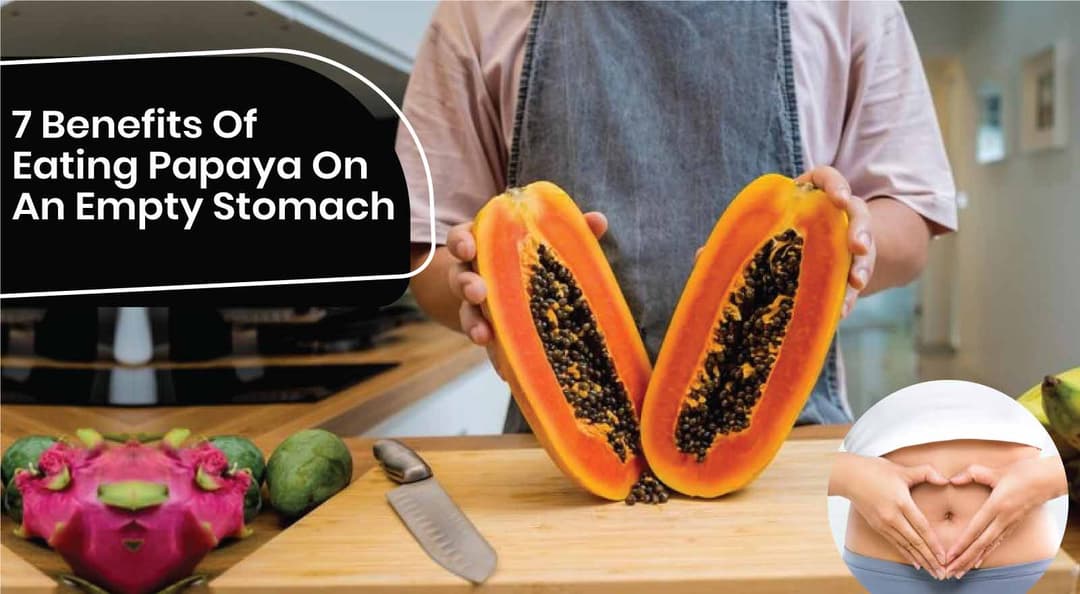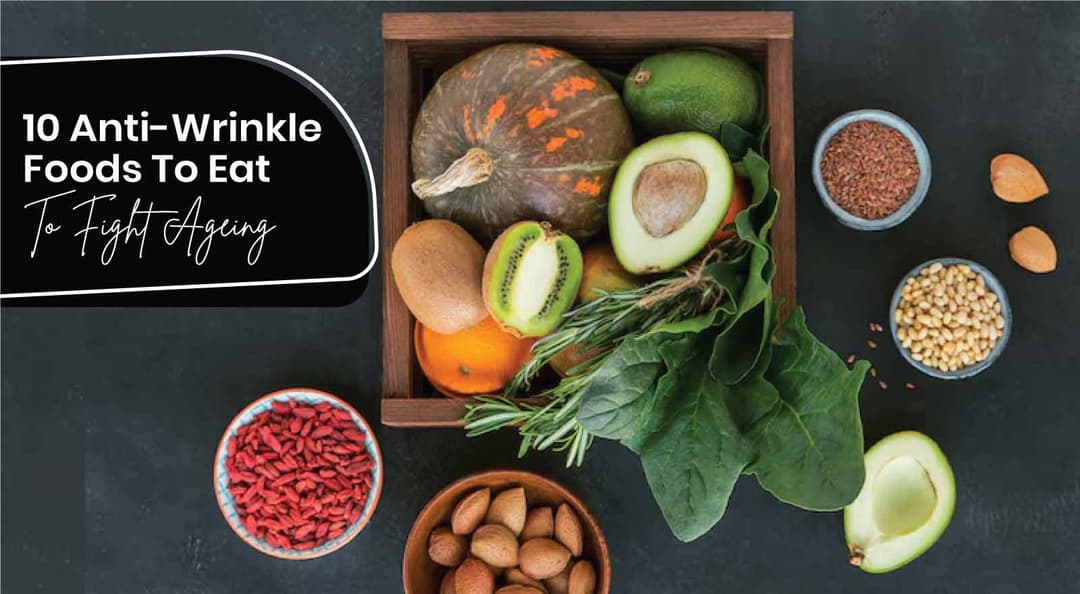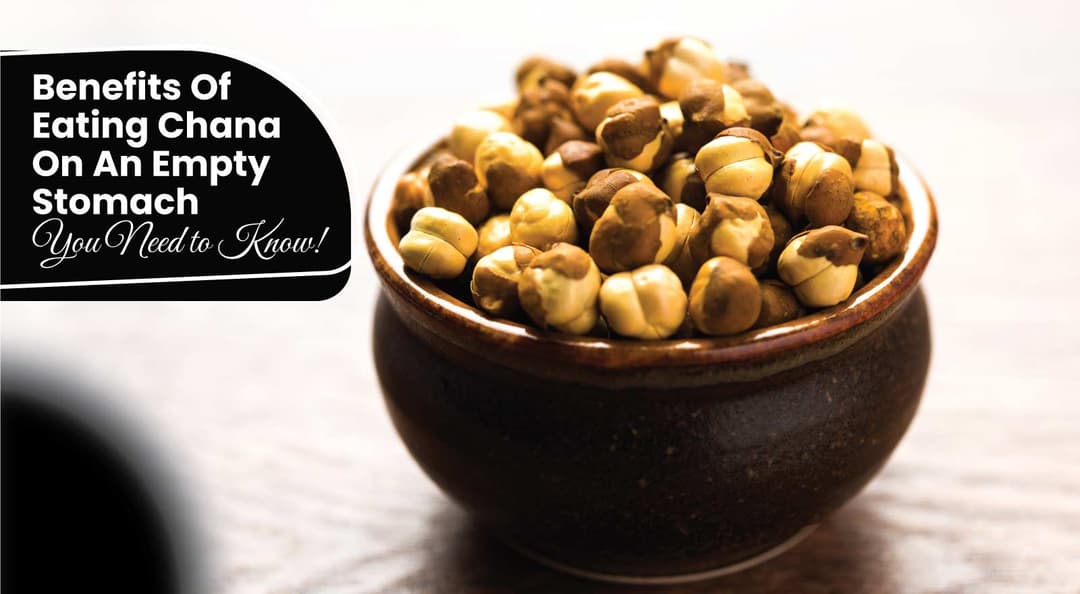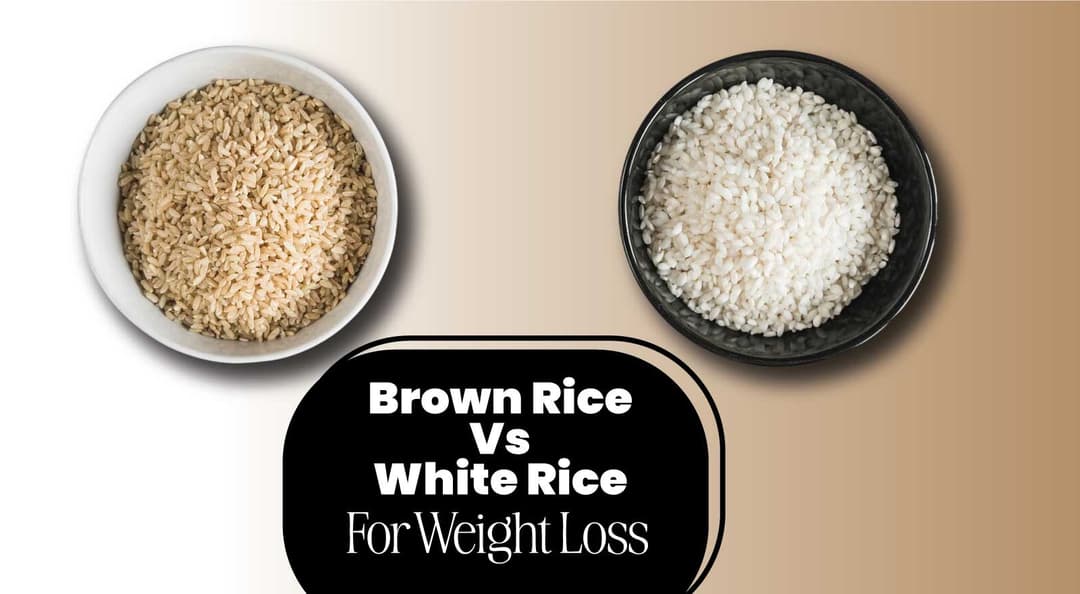Struggling to lose weight despite trying every new diet trend? If you’re someone who’s been skipping meals or eating at odd hours and still not seeing results, it’s time to rethink your approach.
That’s where the 16/8 intermittent fasting method comes in, a smart eating style where you fast for 16 hours and eat during an 8-hour window, helping your body burn fat more efficiently while still allowing you to enjoy satisfying meals.
This blog provides a balanced 16/8 intermittent fasting 7-day indian meal plan for reference, walking you through each day with easy-to-make meals to stay consistent, all while keeping your plate colourful and your belly full. Let’s get started!
Table Of Contents
1. Intermittent Fasting (16:8 Method)
2. Different Types of Intermittent Fasting Explained
3. Sample 16:8 Intermittent Fasting Meal Plan (Indian Version – 7 Days)
4. Top Indian Foods to Include in Your Intermittent Fasting Diet
5. How Much Weight Can You Lose in a Week With 16:8 Intermittent Fasting?
6. The Final Say
7. Faqs
8. References
Intermittent Fasting (16:8 Method)
Intermittent Fasting (IF) is an eating pattern that cycles between periods of eating and fasting. It doesn’t focus on what you eat, but rather when you eat.The most popular form, the 16/8 method, involves fasting for 16 hours and eating during an 8-hour window—typically from 12 p.m. to 8 p.m.
Intermittent fasting allows the body to burn fat by extending the time between meals. When you fast, your body uses up stored sugar (glycogen) and then switches to burning fat for energy—this is called metabolic switching.
In regular eating patterns with frequent meals and snacks, the body continuously runs on incoming calories and rarely accesses fat stores. Fasting helps break this cycle.
After about 10–12 hours without food, glycogen levels drop, triggering fat burning. This shift supports weight loss, improves energy use, and may benefit metabolism and cellular repair.
How It Works
- Fast: 16 hours (e.g., 8 p.m. – 12 p.m.)
- Eat: 8-hour window (e.g., 12 p.m. – 8 p.m.)
- During fasting window:
- Drink water, black coffee, or unsweetened tea
- During eating window:
- Eat 2–3 balanced meals
- Focus on protein, fiber, and healthy fats
Avoid processed foods and sugary drinks
Different Types of Intermittent Fasting Explained
1. 16/8 Method
16/8 is a popular intermittent fasting method where individuals fast for 16 hours each day and consume all their meals within an 8-hour window.
2. 5:2 Method
In this method, you eat normally for five days of the week and drastically reduce calorie intake on the two non-consecutive days.
3. Alternate-Day Fasting
As the name suggests, in this method, individuals alternate between fasting days, where they consume very few calories or none at all and regular days, where they consume their daily calorie intake.
4. Eat-Stop-Eat
This is another effective intermittent fasting diet plan where you fast for a full 24 hours once or twice a week and then consume regular meals the next day.
5. Warrior Diet
In the warrior diet, you will fast during the day and have only one substantial meal in the evening. This has to be continued every day till you see the results, and it requires great determination and discipline.
Sample 16:8 Intermittent Fasting 7 Day Meal Plan (Indian Version)
Day 1
Time | Meal | Notes |
| 12:00 PM (Lunch) | Chicken Salad with Mixed Greens | Grilled chicken breast, cucumber, tomatoes, olive oil dressing. |
| 4:00 PM (Snacks) | Apple Slices with Almond Butter | Rich in fiber and healthy fats, keeps you full. |
| 7:30 PM (Dinner) | Lentil Soup with Whole Wheat Bread | High-protein, high-fiber dinner with whole grains. |
Day 2
Time | Meal | Notes |
| 12:00 PM (Lunch) | Quinoa Salad with Roasted Vegetables | Includes bell peppers, zucchini, onion, feta, lemon vinaigrette. |
| 4:00 PM (Snacks) | Greek Yogurt with Berries & Nuts | Antioxidants + protein + healthy fats. |
| 7:30 PM (Dinner) | Baked Salmon with Steamed Broccoli | Omega-3 rich and nutrient-dense. |
Day 3
Time | Meal | Notes |
| 12:00 PM (Lunch) | Chickpea & Veg Curry with Brown Rice | Fiber-packed, plant-based protein. |
| 4:00 PM (Snacks) | Hard-Boiled Eggs (2) | Simple, satisfying protein source. |
| 7:30 PM (Dinner) | Chicken Stir-Fry with Mixed Vegetables | Lean protein and vibrant veggies. |
Day 4
Time | Meal | Notes |
| 12:00 PM (Lunch) | Whole Wheat Wrap with Hummus & Veggies | Spinach, cucumber, carrots in a wholesome wrap. |
| 4:00 PM (Snacks) | Pear with a Handful of Walnuts | Fiber and healthy fats combo. |
| 7:30 PM (Dinner) | Pasta with Marinara & Lentils | Comforting, protein-boosted plant-based dinner. |
Day 5
Time | Meal | Notes |
| 12:00 PM (Lunch) | Leftover Pasta with Lentils | Delicious and zero food waste! |
| 4:00 PM (Snacks) | Cottage Cheese with Pineapple Chunks | Light, protein-packed, and naturally sweet. |
| 7:30 PM (Dinner) | Grilled Chicken Skewers with Bell Peppers | Colorful, nutrient-rich and satisfying. |
Day 6
Time | Meal | Notes |
| 12:00 PM (Lunch) | Tuna Salad (Greek Yoghurt) on Crackers | Lighter version with protein and crunch. |
| 4:00 PM (Snacks) | Orange | Refreshing dose of Vitamin C and hydration. |
| 7:30 PM (Dinner) | Vegetarian Chilla + Dollop of Greek Yogurt | Savory, high-fiber vegetarian option. |
Day 7
Time | Meal | Notes |
| 12:00 PM (Lunch) | Grilled Shrimp Salad | Fresh veggies with lean seafood protein. |
| 4:00 PM (Snacks) | Handful of Mixed Nuts & Seeds | Great for energy, heart health, and satiety. |
| 7:30 PM (Dinner) | Homemade Veggie Pizza on Whole Wheat Crust | Customizable and loaded with fiber-rich veggies. |
This approach is simple and easy to integrate into most routines.Unlike traditional diets, It helps regulate insulin levels and promotes fat burning during the fasting phase.Many choose IF for its potential benefits, including weight loss, improved digestion, better focus, and metabolic health.
It’s a flexible and sustainable lifestyle change, but should be personalized based on individual health and daily routine.
Top Indian Foods to Include in Your Intermittent Fasting Diet

Consuming a variety of nutrient-rich, healthy foods for weight loss is key to a well-rounded diet. Aim to create balanced meals of diverse whole foods like:
- Fruits (like apples, berries, and bananas)
- Vegetables (including leafy greens, broccoli, and cucumbers)
- Whole grains (such as oats, quinoa, and rice)
- Healthy fats (like avocados and olive oil)
- Various protein sources (like eggs, fish, legumes, and nuts)
To truly leverage the dietary advantages of intermittent fasting, prioritise consuming wholesome, nutrient-dense foods and drinks during your eating windows.
How Much Weight Can You Lose With 16:8 Fasting In A Week?
With the 16:8 intermittent fasting method, you can expect to lose between 0.5 and 2 pounds (0.23 to 0.9 kg) per week.
Several factors influence weight loss
- Your starting weight
- Diet during your eating window
- Activity level
- Metabolism,
- Genetics, and consistency with the fasting schedule
Some individuals may experience more rapid initial weight loss due to fluctuations in water weight, while others may see a steady decline.
It is essential to remember that sustainable weight loss for a healthy body weight index is typically considered to be in the range of 0.5 to 1 kg (1 to 2 pounds) per week. Focusing on long-term healthy habits rather than rapid weight loss is key for maintaining results.
The Final Say
Relying on this 16/8 intermittent fasting 7-day meal plan offers a structured yet adaptable approach to time-restricted healthy eating.
This plan serves as a starting point, encouraging you to explore nutritious whole foods within your eating window and experience the proven benefits of this dietary strategy.
As you progress, feel free to customize it to your preferences and needs, always prioritising a balanced and healthy approach to eating for sustainable wellness.
FAQs
1. What is intermittent fasting?
Intermittent fasting is an eating pattern where you cycle between periods of eating and fasting. It focuses on when you eat, not what you eat, and is used for weight loss and health benefits.
2. Why do people choose intermittent fasting?
People choose intermittent fasting for weight loss, better energy, improved focus, and metabolic health. It's simple, flexible, and doesn’t require strict calorie counting.
3. What is the main purpose of intermittent fasting?
The main goal is to improve overall health by giving the body time to burn fat, balance hormones, support cellular repair, and manage weight naturally.
4. Is intermittent fasting the best way to lose weight?
It can be very effective for weight loss, especially when combined with a healthy diet. However, it’s not a one-size-fits-all and may not suit everyone.
5. Is intermittent fasting the same for all ages and genders?
No, results and safety vary by age, gender, and health. It may not be suitable for children, pregnant women, or those with certain medical conditions.
6. What is a 16/8 intermittent fasting Indian diet plan?
The 16/8 intermittent fasting method involves eating all your meals within an 8-hour window (e.g., 12 p.m. to 8 p.m.) and fasting for the remaining 16 hours.An Indian version includes healthy, home-cooked foods like dal, sabzi, roti, brown rice, fruits, nuts, and curd, focusing on balanced nutrition with minimal processed items. During fasting, only calorie-free drinks like water, black coffee, or herbal tea are allowed
7. What is a good 16/8 fasting schedule?
A good 16/8 schedule is one that fits your lifestyle. A common option is 12 p.m. to 8 p.m., which skips breakfast but includes lunch and dinner. Another popular choice is 9 a.m. to 5 p.m., ideal if you prefer earlier meals. Choose a window that aligns with your daily routine and energy levels.
8. What is the 16/8 pattern for intermittent fasting?
The 16/8 pattern involves fasting for 16 hours and eating during an 8-hour window each day. This daily cycle helps regulate eating times and supports fat burning, digestion, and metabolic health.
9. How to do 16/8 intermittent fasting for beginners?
For intermittent fasting beginners, start by choosing an 8-hour eating window and fast for the remaining 16 hours. During the fasting period, drink water, black coffee, or unsweetened tea. Eat healthy, balanced meals during your eating window, and use reminders to help stay consistent.
10. What is the main purpose of intermittent fasting?
Its main goal is to improve metabolic health, support weight loss, and give your body time to repair during fasting periods.
11. Can I change my eating window in 16/8 intermittent fasting?
Yes, the eating window in 16/8 fasting is flexible. You can adjust it based on your lifestyle, as long as you stick to the 16 hours of fasting.
12. What can I drink during the fasting hours in 16/8?
During fasting, drink water, black coffee, or unsweetened tea. These keep you hydrated and don’t break your fast, as they have no calories.
References
- https://health.clevelandclinic.org/intermittent-fasting-4-different-types-explained
- https://www.hexahealth.com/blog/7-day-meal-plan-for-intermittent-fasting
- http://karetrip.com/blogs/intermittent-fasting-7-days-indian-diet-plan
- https://www.medicalnewstoday.com/articles/327398
- https://www.hopkinsmedicine.org/health/wellness-and-prevention/intermittent-fasting-what-is-it-and-how-does-it-work
- https://www.webmd.com/diet/intermittent-fasting
- https://greatist.com/eat/what-to-eat-on-an-intermittent-fasting-diet
About ToneOp Fit
ToneOp Fit is a platform dedicated to improving and maintaining good health through a comprehensive range of goal-oriented health plans with up to 3 Coach support. With a range of Weight Management, Medical Condition, Detox Plans, and Face Yoga Plans, the app also provides premium health trackers, recipes and health content. Get customised diet, fitness, naturopathy & yoga plans and transform with ToneOp.
Disclaimer
We’re here to support you on your health and wellness journey, but please remember that the information shared on this website—whether related to fitness coaching or nutrition plans—is meant for general guidance only.
Everyone’s body is different. What works for one person may not work for another. That’s why it’s so important to consult with a doctor or qualified healthcare provider before starting any new workout, meal plan, or lifestyle change—especially if you have any pre-existing health conditions.
Our goal is to empower you with knowledge and motivation, but we can’t guarantee specific results. Your progress depends on many personal factors, including consistency, medical history, and individual effort.
And if you’re ever in a medical emergency, please seek immediate care from a healthcare professional.













